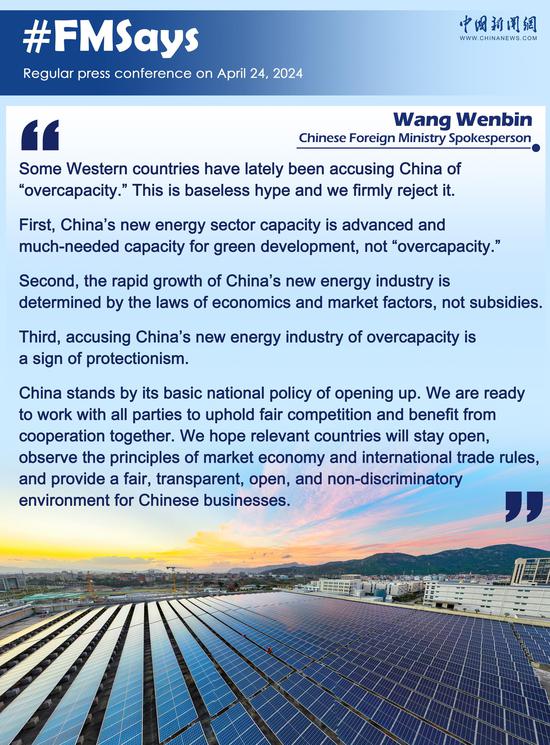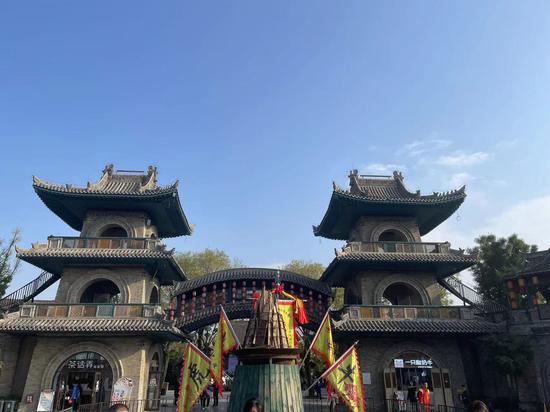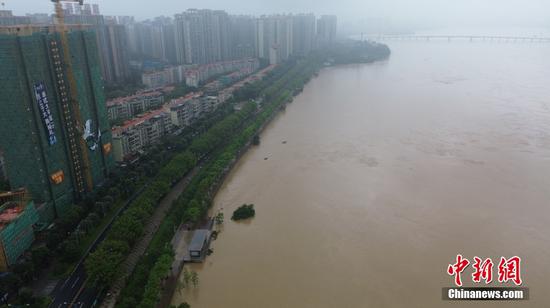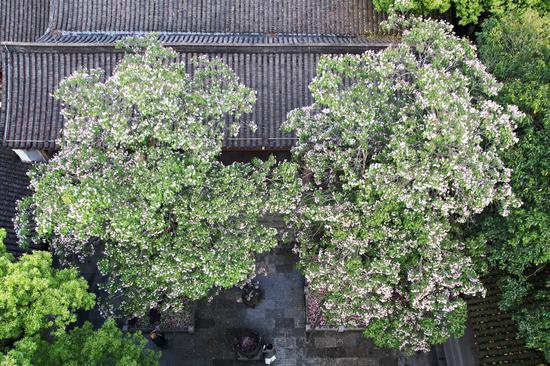Due to the combined influence of global warming and the El Nino phenomenon, the precipitation in South China has exceeded twice the usual amount so far this month, meteorological experts said, while cautioning about the increased risk of flooding and geological disasters in some areas affected by the recent heavy rainfall.
"In April, South China has experienced over double the typical precipitation for the month, marking the second-highest level since 1961," said Zheng Zhihai, chief forecaster at the National Climate Center.
Zheng said that areas including South China's Guangdong province and the Guangxi Zhuang autonomous region as well as East China's Zhejiang and Jiangsu provinces and Shanghai have experienced higher temperatures than normal, against the backdrop of climate change.
This temperature increase has elevated the atmospheric moisture levels, intensified convective processes, and led to more frequent occurrences of heavy rainfall, he said.
"In addition, influenced by the El Nino phenomenon, the subtropical high pressure in the western Pacific has remained strong since April, directing ample water vapor from the South China Sea and the Bay of Bengal toward the southern regions of China. This, combined with circulation anomalies in the Qinghai-Tibet Plateau and South China, has led to numerous occurrences of rainstorms," he said.
Zheng added that South China typically enters the pre-flood season in April, characterized by frequent heavy rainfall and severe convective weather. However, in previous years, the range and duration of these events were less severe during the corresponding period, as the water vapor had yet to arrive in the region.
Ding Yihui, an academician at the Chinese Academy of Engineering, said in a recent media interview that "the world has entered a new phase of climate change, which is characterized by an increased frequency of extreme weather events, resulting in the occurrences of sudden climate and weather-related disasters".
Affected by heavy rainfall, the Beijiang River in the Pearl River Basin saw the first flood of the year on April 7.
On Saturday evening, massive flooding hit the Beijiang River for the second time, leaving at least four people dead and around 110,000 residents relocated, according to the Guangdong provincial emergency department.
The Pearl River Basin mainly includes Guangxi, Guangdong, Yunnan and Guizhou.
Although the rivers have receded below the alert level, it is expected that another spate of heavy rainfall would hit regions such as Guangdong, Guangxi, southern Hunan province and eastern Guizhou province from Wednesday to Friday, said Sun Jun, chief forecaster at the National Meteorological Center.
"The accumulated precipitation in central and northern Guangdong, coastal regions of Guangdong and northeastern areas of Guangxi during this period is expected to reach 100 to 240 millimeters, with some areas experiencing 250 to 300 mm," Sun said.
Early this week, the Ministry of Water Resources also warned the possibility of significant flood events in the Beijiang, Hanjiang and Dongjiang rivers within the Pearl River Basin during this period.
Nong Mengsong, chief forecaster at the meteorological center in Guangxi, cautioned about the increased risk of geological disasters resulting from the convergence of the affected areas, given the already high moisture content in the soil.
Nong said that special attention should be paid to guarding against secondary disasters such as floods, mudslides, landslides and waterlogging, and precautions should be taken to mitigate the safety hazards caused by lightning and intense winds.
Hou Aizhong, chief hydrology forecaster at the Ministry of Water Resources' information center, said this year's flood season, which started on April 1, will feature a concurrence of droughts and floods, with floods being more widespread.
Hou said the seven major rivers in China — the Yangtze, Yellow, Haihe, Liaohe, Huaihe, Songhuajiang and Pearl — are likely to experience different levels of rainstorms and flooding.


















































 京公网安备 11010202009201号
京公网安备 11010202009201号